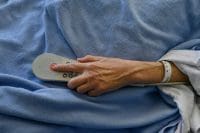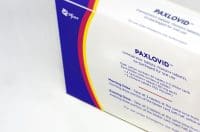Healthcare workers struggling, expressing fears
Earlier this week, The Joint Commission released a Sentinel Event Alert addressing the fears of healthcare workers and outlining five strategies for supporting these workers.
“To be a nurse, you really have to care about people,” an Iowa nurse said in the Alert.
But when faced with an ICU full of patients with COVID-19 with grim prognoses, “to protect yourself, you just shut down. You get to the point when you realize that you’ve become a machine. There’s only so many bags you can zip.”
The fears of healthcare workers range from the unknown – will there be enough PPE to protect me during my shift? – to the fear of falling ill and passing the virus onto loved ones. Those fears are heightened in workers likely to face serious complication from a potential COVID-19 infection due to age or other underlying conditions.
But the greatest challenge reported in the study is staffing, where the obstacles range from communication to simply having enough staff members to cove each shift. Challenges in hiring and finding childcare coverage ranked near the top of this list of concerns. One chief quality officer of a behavioral health organization said “more staff have taken time off, morale has been difficult to keep buoyed up. Everyone is pretty much worn out all the time.”
Addressing concerns
As far as examples of how organization can support health care workers, the study offered five primary suggestions:
1. Foster open and transparent communication to build trust, reduce fears, build morale, and sustain an effective workforce.
2. Remove barriers to health care workers seeking mental health services and develop systems that support institutional, as well as individual resilience.
3. Protect workers’ safety using the National Institute of Occupational Health and Safety (NIOSH) Hierarchy of Controls framework.
4. Develop a flexible workforce; evaluate the work being performed and determine if it can be performed remotely.
5. Provide clinicians and others with opportunities to collaborate, lead and innovate.
“We said loud and clear to every leader in the organization, you’ve got to be out rounding,” said Tracey Moffatt, RN, MHA, chief nursing officer/system vice president of quality at Ochsner Health in New Orleans. “This is the kind of leadership where we acknowledge that there’s fear, anxiety, and frustration.
“I think it’s something executive leaders don’t often do very well, is show our own vulnerability and emotion.”
Download the PDF of the Sentinel Event Alert here.


















